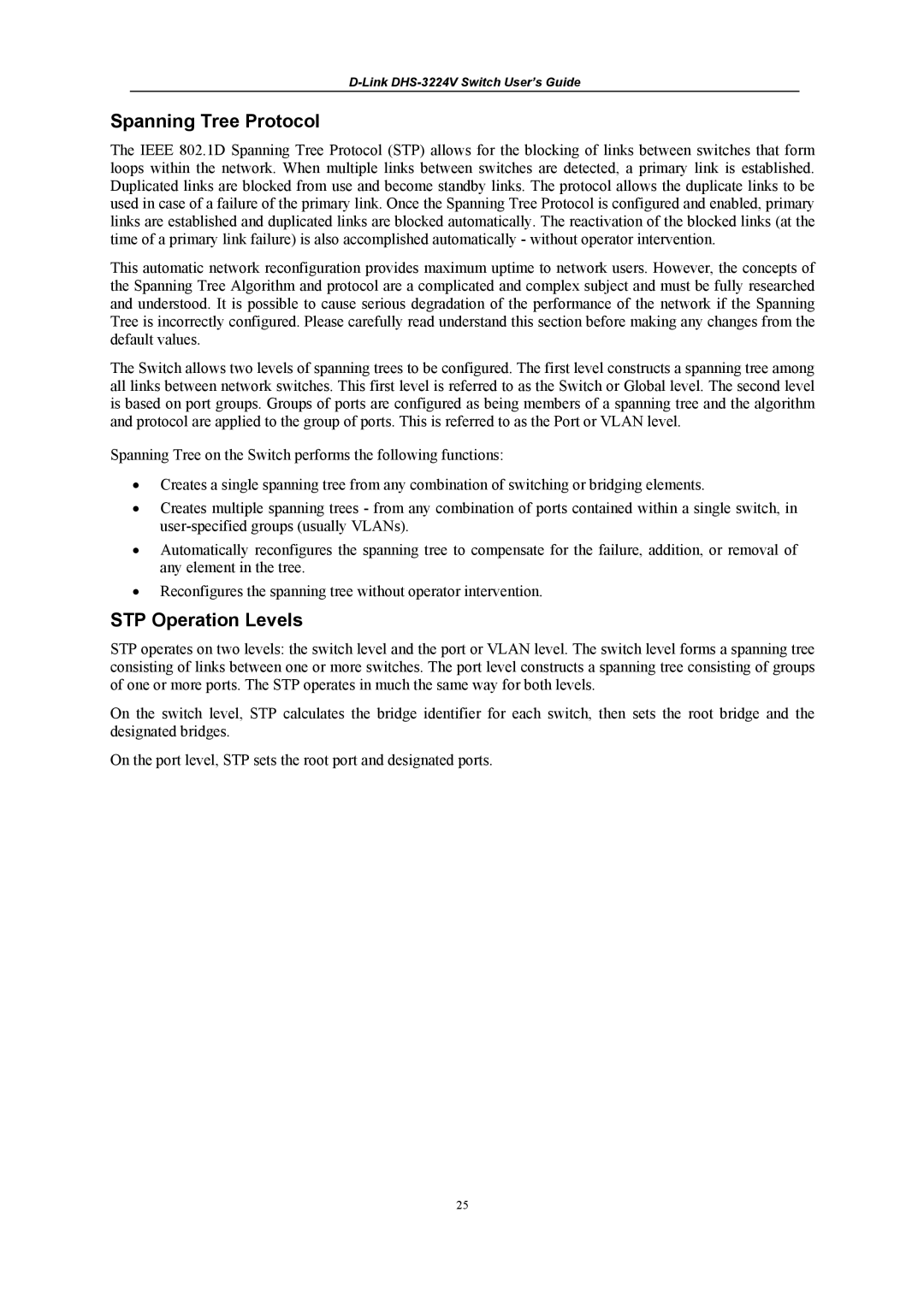Spanning Tree Protocol
The IEEE 802.1D Spanning Tree Protocol (STP) allows for the blocking of links between switches that form loops within the network. When multiple links between switches are detected, a primary link is established. Duplicated links are blocked from use and become standby links. The protocol allows the duplicate links to be used in case of a failure of the primary link. Once the Spanning Tree Protocol is configured and enabled, primary links are established and duplicated links are blocked automatically. The reactivation of the blocked links (at the time of a primary link failure) is also accomplished automatically - without operator intervention.
This automatic network reconfiguration provides maximum uptime to network users. However, the concepts of the Spanning Tree Algorithm and protocol are a complicated and complex subject and must be fully researched and understood. It is possible to cause serious degradation of the performance of the network if the Spanning Tree is incorrectly configured. Please carefully read understand this section before making any changes from the default values.
The Switch allows two levels of spanning trees to be configured. The first level constructs a spanning tree among all links between network switches. This first level is referred to as the Switch or Global level. The second level is based on port groups. Groups of ports are configured as being members of a spanning tree and the algorithm and protocol are applied to the group of ports. This is referred to as the Port or VLAN level.
Spanning Tree on the Switch performs the following functions:
•Creates a single spanning tree from any combination of switching or bridging elements.
•Creates multiple spanning trees - from any combination of ports contained within a single switch, in
•Automatically reconfigures the spanning tree to compensate for the failure, addition, or removal of any element in the tree.
•Reconfigures the spanning tree without operator intervention.
STP Operation Levels
STP operates on two levels: the switch level and the port or VLAN level. The switch level forms a spanning tree consisting of links between one or more switches. The port level constructs a spanning tree consisting of groups of one or more ports. The STP operates in much the same way for both levels.
On the switch level, STP calculates the bridge identifier for each switch, then sets the root bridge and the designated bridges.
On the port level, STP sets the root port and designated ports.
25
